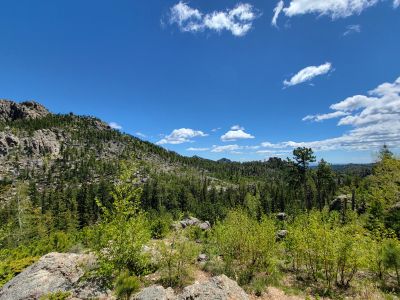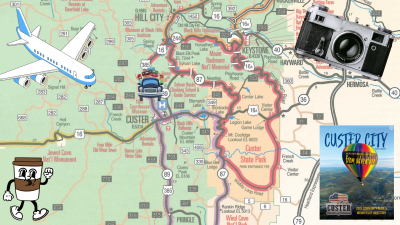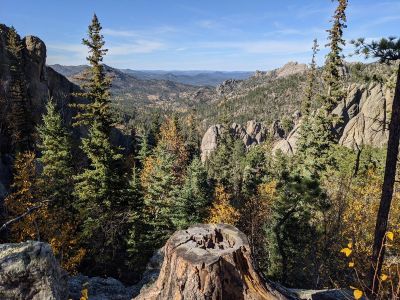| Plan for the 101st Annual Gold Discovery Days Celebration July 16, 2024 It’s here! It’s here! The Carnival that is…! The 101st Annual Gold Discovery Days Celebration starts THIS WEEKEND! The wheelbarrows have been secured, the gold has been freshly painted, and the panning pond is being prepped for the Gold Panners Race on Friday night. (Thank you to RP Lumber and Ace Hardware) The volleyball courts have been groomed by the City crew. The parade lineup is in the works and the royalty have been practicing their waves. The prizes for the gold nugget hunt have been “egged”. And maybe most importantly, the signs have been placed throughout town letting everyone know to be ready this FRIDAY, SATURDAY, and SUNDAY! (and technically Thursday for the Carnival!) Check out this schedule of events and start making plans for the most family fun you’ll have all year! Pick up a copy for yourself at a downtown business.
National Trails Day Written by Darian Block May 31, 2024  June 1st - National Trails Day in the Black Hills of South Dakota 2024 National Trails Day grew significantly popular in the late 1980s from the growing hiking and outdoor community along with political leaders wanting to “unlock the vast potential in America’s National Trails System,” according to the American Hiking Society’s website. However, the National Trails System has been in effect since 1968 after President Lyndon B. Johnson signed it into law prioritizing trails of history, scenery, and recreation. Since then, trails across the United States have played massive roles in people’s love for the outdoors. Here in the beautiful, southern Black Hills, there are practically endless trails to experience, whether in Custer State Park, near the caves, or simply up the hill to the Custer sign. Custer State Park houses over 25 trails for people to use, and they range from a simple paved walk around one of the various man-made lakes to a steep walk with an elevation increase of almost a thousand feet! No matter the case or your hiking level, the Black Hills offers many trails that anyone can choose from for a beautiful day out in the Hills. Here at the Chamber of Commerce, we get many questions about what the best, longest, shortest, prettiest, etc. trails are, but we usually have a hard time choosing! Some of our favorites, however, include Hell Canyon, Lover’s Leap, Sunday Gulch, and, of course, Black Elk Peak. Hell Canyon, which starts just past Jewel Cave National Monument west of Custer, is around a six-mile loop that includes both walking along a creek and climbing up a rocky walkway and features amazing views. This trail allows hikers, cyclists, and horseback riders and has an elevation increase of almost 800 feet. Lover’s Leap is strictly a walking-only trail lasting a little over four miles in Custer State Park. This loop trail starts across the road from Peter Norbeck Visitor Center and has an increase of 700 feet in elevation. It is best known for its rocky ridge that offers an absolutely amazing view of Black Elk Peak, Cathedral Spires, and Mount Coolidge! Sunday Gulch, right behind Sylvan Lake in Custer State Park, is another walking-only loop trail that offers both rocky terrain and built-in steps with railings to climb up. Although it’s four miles, the 775-foot climb somewhat comes all at once, so this trail is best started to the left of the trailhead. This is an especially nice trail in the summer since you can simply jump into Sylvan Lake to cool off afterward! Finally, Black Elk Peak is arguably the most famous hike in the Hills, and rightfully so. It offers some of the most beautiful, vast views of the Black Hills given that it is the highest point east of the Rocky Mountains. There are a few options on how to get up to Harney Lookout Tower on Black Elk Peak, but each offers such spectacular views that you can’t really go wrong with any of them. However, the shortest trek up there is a little over three miles (not including the trek back down), so we recommend setting a good block of time to complete these trails since they are a bit longer than the average ones the Black Hills offers. We hope you celebrate National Trails Day this year by getting outside and exploring the beautiful Black Hills, whether it be a quick walk or an all-day excursion! | Plan for the 101st Annual Gold Discovery Days Celebration July 16, 2024 National Trails Day Written by Darian Block May 31, 2024  BRIDGES OF CUSTER COUNTY March 27, 2024 Groundhog Day! Written by Andrea Spaans February 1, 2024  Plan for Vacation Day Written by National Day Calendar January 29, 2024  |

|
||||
|
| ||||

 FINAL.png)





